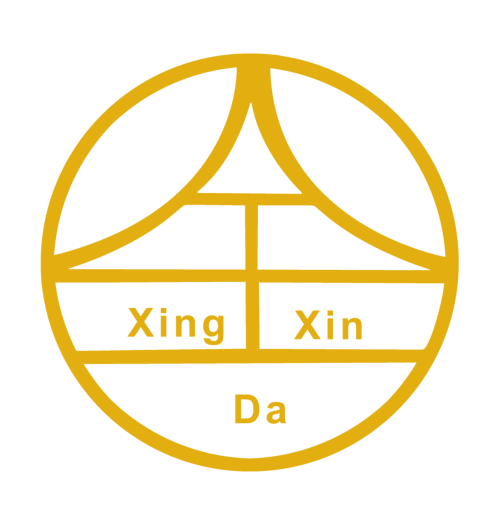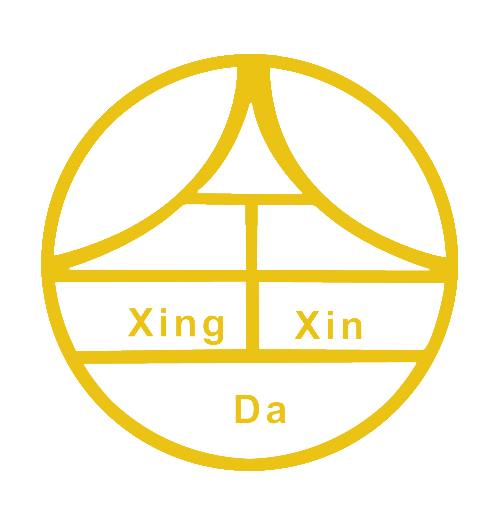Understanding Iron-On vs. Embroidered Patches
Definition of Iron-On Patches: Heat-Activated Adhesive Backing
Iron on patches work great when someone wants something fast and easy to put on clothes or other stuff. The back has special glue that gets activated by heat from an iron. Just press the iron onto the patch for a bit and voila! The glue melts and sticks firmly to whatever fabric it touches. People love these kinds of patches for all sorts of casual wear and craft projects around the house. They show up everywhere from personalized denim jackets to plain white t-shirts and even those canvas tote bags we all carry around. Most folks pick them because they last pretty well and don't require any complicated tools or techniques to apply.
Embroidered Patches Explained: Threadwork & Fabric Base
Embroidered patches get made when colored threads are stitched into fabric, resulting in detailed designs that really pop visually and feel different to touch. What makes these patches so great is their toughness and adaptability they last forever and work well on everything from everyday clothes to those fancy branded hats companies give away at events. People love how they look too, which is why so many businesses choose them for uniforms, logo wear, and premium custom gear. There's something special about seeing thread art come alive on fabric, and this combination of beauty and practicality keeps embroidered patches standing out in today's competitive embroidery market where customers want both quality and character.
Key Differences in Structure and Flexibility
The difference between iron on and embroidered patches really matters when picking what works best for a particular project. Iron on patches come with stiff adhesive backs that don't bend much, so they often crack after being folded repeatedly or moved around a lot. Embroidered ones feel more like regular fabric though, which means they hold up better in places where there's constant motion, such as on police uniforms or sports gear that gets stretched during activity. Choosing between these options comes down mostly to how stretchy the material needs to be and where exactly the patch will sit on whatever it goes on.
Pros and Cons Comparison
Iron-On Advantages: Speed & Ease of Application
What makes iron on patches so great? Well, they're super easy to put on basically any garment without needing fancy sewing skills. Just grab an old iron from the kitchen drawer and BAM! The patch sticks within minutes. Great for fixing holes in jeans or jazzing up plain t-shirts with some flair. Plus these things are really light weight, so they won't make clothes feel heavy or stiff when applied properly. People love them for everyday wear since we all need to personalize our stuff fast sometimes. From school uniforms to backpacks, iron on patches have become a go to solution for folks looking to spruce things up quickly without breaking a sweat.
Embroidered Benefits: Professional Finish & Texture
Embroidered patches really catch attention because they look so clean and professional, which is why lots of businesses and organizations gravitate toward them when wanting to represent their brand effectively. What sets them apart is how they feel against fabric too. The stitching creates a nice texture that people can actually touch and notice, adding depth to whatever garment or accessory they're attached to. These patches also hold up surprisingly well over time. They don't tend to fray at the edges or lose color easily, something many companies appreciate since it means less frequent replacements. That's probably why we see them so often on work uniforms and promotional items where both lasting power and good looks matter. Most professionals who have used embroidered patches will tell anyone willing to listen just how much better they perform compared to other options available in the market today.
Limitations of Both Patch Types
Iron on patches are great when it comes to convenience but sometimes struggle with heat sensitive materials, often failing to stick properly on some fabrics or in certain situations. Embroidered patches tell a different story though they demand more skill because of all the sewing work involved, making them take longer to apply particularly if the design gets complicated. Washability remains a challenge across both options too. Iron ons tend to peel off after repeated washing cycles without proper maintenance, whereas embroidered patches gradually lose their shape and color over time. To keep these patches looking good for longer periods, people need to pay attention to what kind of fabric they're putting them on and how frequently those items will be washed. Cotton blends generally work better than synthetic materials for most applications.
Application Techniques Demystified
Step-by-Step Iron-On Process for Hats/Jeans
Putting on those iron-on patches to hats or denim isn't really complicated at all. Start by getting your iron nice and hot, but make sure it's set to whatever works best for whatever fabric you're working with. Cotton stuff usually takes higher temps than synthetics, so read the care label if possible. Before placing the patch anywhere, give that spot a good cleaning and make absolutely certain it's completely dry. When positioning the patch, remember to put the printed side down against the fabric. Cover everything with an old towel or something similar to protect both surfaces from scorching. Press down firmly with the iron according to what the patch packaging says about timing. Let everything cool off before touching anything else. Once cooled, take a look around the edges to see if everything stuck properly. Sometimes corners get tricky, so don't hesitate to run the iron over again if needed. A little extra heat can make all the difference between a patch that stays put through countless washes and one that starts coming apart after just a few wears.
Sewing Embroidered Patches: Needlework Basics
Getting good results when sewing embroidered patches starts with picking the right needle and thread. Most people find that matching thread color to both the patch and fabric works best for keeping things looking clean and not too noticeable. Start off with either a basic running stitch or back stitch to hold everything in place properly. Try to keep those stitches pretty consistent across the whole patch area so nothing looks messy later on. After securing the patch where it needs to go, don't forget to make a knot underneath the fabric. This little trick stops threads from coming loose after washing, which means our hard work stays put much longer and maintains that professional finish we all want.
Troubleshooting Common Attachment Issues
Sometimes problems come up when applying patches. When an iron on patch begins to lift off, check what temperature was used during application and consider leaving it on longer so it sticks better. Embroidered patches present their own challenges too. If threads are left loose they tend to bunch up or warp the overall look. The stitching needs to be firm enough without being stretched out of shape. Don't forget about regular checks either. After each wash cycle, take a good look at those patches for any signs that they're coming loose or getting frayed edges. Fixing small issues right away makes all the difference in how long patches stay put and maintain their appearance over time.
Durability and Maintenance
Washability: How Each Patch Type Holds Up
How well patches hold up during washing really affects how long they last. When someone applies iron-on patches properly, they usually survive several laundry sessions. But over time these patches tend to come loose, particularly after repeated exposure to strong detergents or rough washing machine movements. Embroidered patches are different though because they get stitched directly onto fabric. The actual thread work keeps them much more secure, so they don't just fall off easily. To make sure patches stay put for longer periods, folks should turn clothing inside out before washing and try air drying whenever possible. Doing this helps protect both the patch itself and maintains the overall look and quality of whatever item has been patched.
Long-Term Wear: Fraying & Adhesive Breakdown
Knowing how different kinds of patches hold up over time really matters for keeping them looking good. Iron on patches tend to have problems with the glue coming loose when exposed to heat from dryers or irons, which can make the edges start to unravel. Throw in some strong laundry soap and things get even worse. Embroidered patches generally last longer but still aren't completely safe from damage. The threads around the border will fray eventually unless someone takes extra care sewing them on properly. Getting decent materials matters a lot here. People who spend money on better quality patches and follow simple maintenance tips find that both iron on and embroidered options stay intact much longer than those treated roughly.
Repair Tips for Damaged Patches
Patches tend to last longer if we catch them before they really start to fall apart. When those little threads come loose around embroidered designs, grab a needle and some matching thread colors from the back of old t-shirts or whatever works. Just stitch through the fray area gently so nobody notices later on. Iron-on patches sometimes lift at the corners too. A quick pass with a hot iron usually sticks them right back down again. Fabric glue works pretty well too if the heat method fails completely. Always check all patches after doing laundry since water and detergent can weaken materials over time. Catching problems early means saving money in the long run while keeping everything looking decent instead of letting it turn into a mess nobody wants to deal with.
Choosing the Right Patch for Your Project
Fabric Compatibility Guide
Getting the right kind of patch matters a lot when it comes to what fabric we're dealing with. For heavy duty stuff like denim or canvas, embroidered patches tend to hold up better because they get stitched into place, making them really secure. On the flip side, lighter materials such as cotton or polyester often work well with iron on patches. Still need to watch out though since too much heat can actually ruin those delicate fabrics. When picking a patch, think about how often the garment gets washed and worn day to day. This helps figure out if the chosen patch will last without falling apart after repeated use.
When to Prioritize Speed vs. Permanence
Knowing whether to go fast or make something last matters a lot when applying patches. Iron on patches work great for those quick fixes we all face sometimes, like fixing a torn jeans seam before heading out or adding a logo to a jacket for an event. No sewing machine needed, just heat and done. But think differently about what gets worn day after day. Uniforms at schools, workwear that sees constant use, these need something stronger. Embroidered patches hold up much better through washing cycles and regular wear while looking sharp too. Most people forget how much difference quality makes here. Take a moment to look at what actually gets used most in daily life versus occasional stuff. That small step saves time later and keeps things looking good longer.
Customization Options: Thread Colors & Sizing
When it comes to custom patches, there really is no limit to what designers can create. Picking out particular thread shades and dimensions that match either company branding or personal style lets creators make something genuinely one-of-a kind. Getting the sizing right makes all the difference visually speaking, making sure the patch sits just right on whatever fabric it goes onto without looking out of place. Many suppliers offer tons of different customization features these days, so taking time to look through what's available often leads to discovering some pretty amazing detail work that fits exactly what someone wants for their project.





